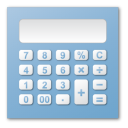Many people take advantage of the many benefits of being self-employed, such as increased flexibility and freedom, the ability to work at least partially from home and more. However, when it comes to buying a new home and applying for a mortgage, being self-employed seems like a disadvantage. After all, lenders typically want to see at least two years of your income history in order to qualify you for a loan. While being self-employed can potentially make the loan application process more challenging, you may be able to fly right through the income qualification process. To determine if you can qualify for a home mortgage as a self-employed individual, walk through these important steps.
Gather Your Income Documents
Underwriters typically ask to see a salaried or hourly employee’s paystubs, W-2s and tax returns for the last two years. This may be to document stable income at a specific level and to ensure that the individual is still gainfully employed. When you are self-employed, W-2s and paystubs are not applicable. However, you may be required to provide two to three years of personal tax returns as well as business tax returns, if applicable. In addition, to further document your income, you may need to provide a current profit and loss statement or income statement for the year and bank statements showing regular deposits for at least the last three months. Be aware that some underwriters may have slightly different requirements, such as four months of bank statements rather than three.
Review Your Numbers
After you pull these documents out, you need to analyze them to determine if you can qualify for a typical home loan. Underwriters typically calculate a debt-to-income ratio to ensure that your current income level can support your expenses. They calculate a front-end and back-end ratio. The front-end ratio only takes into account housing-related expenses for the new home, such as the projected mortgage payment and HOA dues. Each lender has a unique requirement, but you can generally expect the requirement that the front-end ratio is no greater than 28 percent or less of your income. The back-end ratio takes into account those same housing expenses as well as minimum credit card payments, loan payments and other expenses on your credit report. This ratio should not typically be greater than 36 percent of your income. Keep in mind that these ratios use your two-year average net income, which means that this is your taxable income after business expenses have been taken out.
Ready to learn more about the Buy to Let process? Kindly fill out the form below and one of our live representatives will contact you!
Explore Loan Options
Remember that some lenders have variations to these requirements. For example, with one residential mortgage program, the back-end ratio could be as high as 40 or 42 percent. When you understand your ratios, you can more easily find the right loan program for you. Calling around to a few different lenders to discuss requirements can tell you more about the options.
Some self-employed individuals maximize their deductions, and this reflects in reduced net income. If you have been in the habit of maximizing deductions, you may need to spend the next few years adjusting this behavior to show higher income levels on your tax returns before you can qualify.


